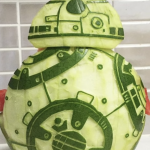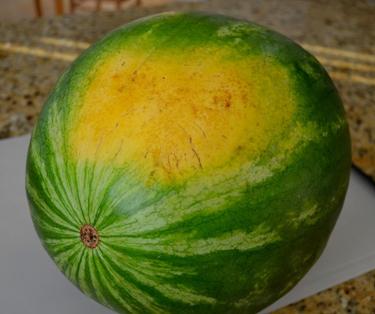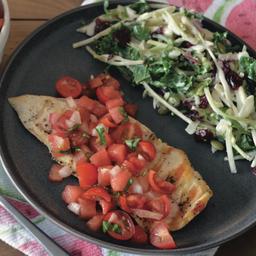
These hot and humid days remind me of a fun summer festival that I used to attend in Maryland — the Great Eastern Shore Tomato Festival. There were bands and lots of tomatoes, raw oysters, and other local favorites.  For me, the highlight of the festival was ‘chuckin’ watermelons from a cannon into the river. That was crazy fun! It’s thrilling to see the watermelon arc through the sky and splash into the river.
For me, the highlight of the festival was ‘chuckin’ watermelons from a cannon into the river. That was crazy fun! It’s thrilling to see the watermelon arc through the sky and splash into the river.
However, I’d rather eat the watermelon, and that’s why I’m excited about one of my new home’s hottest summer parties – the California Watermelon Festival. This 55-year-old festival fully celebrates the watermelon, harkening back to the day when watermelon was the glorified crop of the San Fernando Valley. Of course, there will be silly contests (think stepping into a carved-out watermelon and ‘skiing’ down a greased canvas) and watermelon carving contests and pony rides and bubble parties. But the best part is there is plenty of free watermelon for all comers.



See more cool carvings at the Watermelon Board’s website!
Watermelon has gotten a bad rep for being a delicious and hydrating fruit yet with little nutrient value. However, recent studies have shown that one cup of watermelon contains over 20% of your Daily Requirements for Vitamin C. And our friends at the Watermelon Board point out that watermelon is also high in Vitamin A. Watermelon has more lycopene (the molecule that gives its flesh the dark red color) than a raw tomato. Lycopene is linked to healthy eyes and hearts and protects against certain cancers.
Watermelon seeds traveled with explorers from Moorish Spain to Europe in the 10th century. After being cultivated in warmer Mediterranean regions, watermelon was brought to the Americas by the European colonists during the 16th century. Today, watermelon is grown in 44 U.S. states, with significant production in California, Florida, Georgia, and Texas. Most Americans will pick up the sweet dessert watermelon species, Citrullus lanatus, at their local grocery store or farmer’s market. This species is among the most important crops grown and consumed globally, with over 100 million tons in annual global production. In 1952 scientists developed the seedless watermelon. It’s not really seedless – it has immature white seeds that are easy to swallow. Although spitting watermelon seeds is a fun summer game, 92% of watermelons bought in the US are ‘seedless.’
One of the saddest dining experiences in my life has been cutting open a big watermelon at the end of a hot day and finding it pale and tasteless. Although some grocers give free samples so you can taste the watermelons, use three of your other senses (seeing, hearing, touching) to choose the best watermelon from the pile.
How to Choose the Juiciest Tastiest Watermelon from the Pile
 See:
See:
- Find a dull watermelon (shiny melons are unripe) with consistent stripes. The green should be dark, and the yellow stripes should be light and creamy.
- Pick a round watermelon – rounder watermelons are sweeter, while the oval-shaped is less sweet.
- Examine the field spot. That’s the yellow spot where the watermelon sat on the ground while it was ripening. The color should be creamy and yellow – NOT white.
- Inspect the stem. The stem ( some call it a tail) should be dry and yellow-brown. A green stem signifies an unripe melon.

 Hear:
Hear:
- Gently tap on the melon.
- Listen for a deep and hollow sound. If your knock sounds dense, the rind might still be too thick, and the fruit has not ripened.
 Touch:
Touch:
- Pick up the watermelon.
- Feel its heft. It should feel very heavy for its size. The denser it is for its size, the greater the water content; this will give you a sweeter watermelon.
Now that you’ve chosen the juiciest and tastiest watermelon use your DinnerTime Recipe Box to search for watermelon recipes. Or try one of the recipes we’ve suggested below.
Water-Yum-Melon Recipes!
Search for more delightful recipes in your DinnerTime Recipe Box.
Use the filter function (found on right of your DinnerTime Recipe Box search) to find desserts, main dish, side dishes etc.



